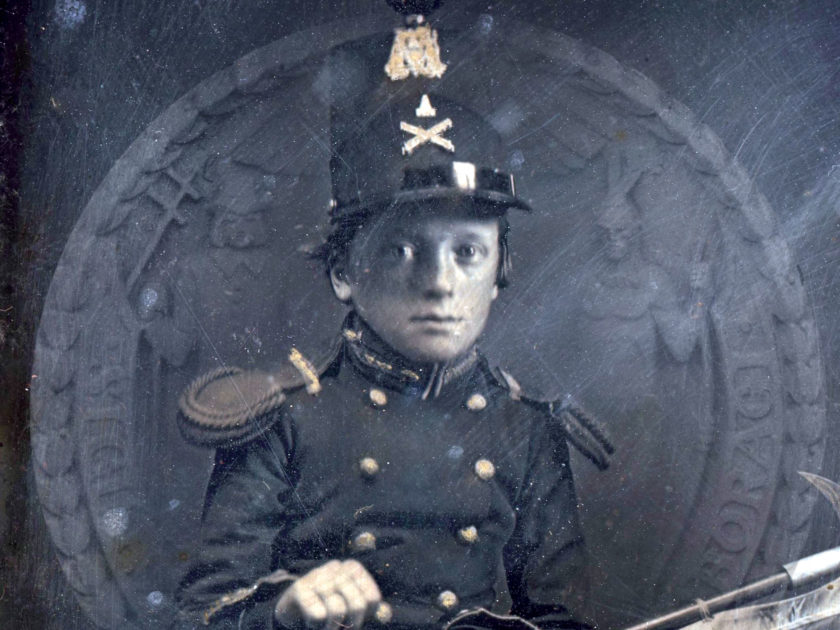Using his drum as a stool, this boy served in a New York City militia organization, as evidenced by the pompon ornament at the top of his dress cap. It is the city seal: A coat of arms flanked by a colonial settler and Native American, above which floats a spread-winged eagle. The crossed cannons insignia of the artillery displays below the seal.

Sixth-plate daguerreotype by an unidentified photographer. Mike Medhurst Collection.

His cap reflects the pattern of 1851, and it suggests he posed for this portrait during the early part of the decade. Other items, namely the saber bayonet that appears to be a French/Belgian Model 1842 and what may be a Pattern 1840 artillery sword belt, support the timeframe. The format of the photograph, a daguerreotype, is another indicator
The N.Y. guidon, or marker flag, with halberd-style finial also dates to antebellum times.
Militia companies and other organizations of this period are difficult to identify due to the number of design changes and gaps in the written and visual record. New York City is no exception. In this case, according to Senior Editor Ron Field, the strongest possibility is the 6th New York State Militia, known as Governor’s Guard. Its members wore dark blue cloth coats and pants faced with scarlet cloth and trimmed with gold lace. The dress caps were constructed of blue cloth bodies and pompons of worsted scarlet. In an 1860 report, the New York Herald described it as “the most beautiful artillery uniform in this country.” The 6th paraded with a drum corps of eight pieces in October 1860. When on duty the regiment served as infantry, so the guidon would be used as a marker flag.
Considering his age and military inclinations, it is easy to imagine that this drummer, had he lived into the 1860s, would have offered his services to the Union Army or Navy.
LEARN MORE about Military Images, America’s only magazine dedicated to showcasing, interpreting and preserving Civil War portrait photography.
VISIT OUR STORE to subscribe, renew a subscription, and more.

